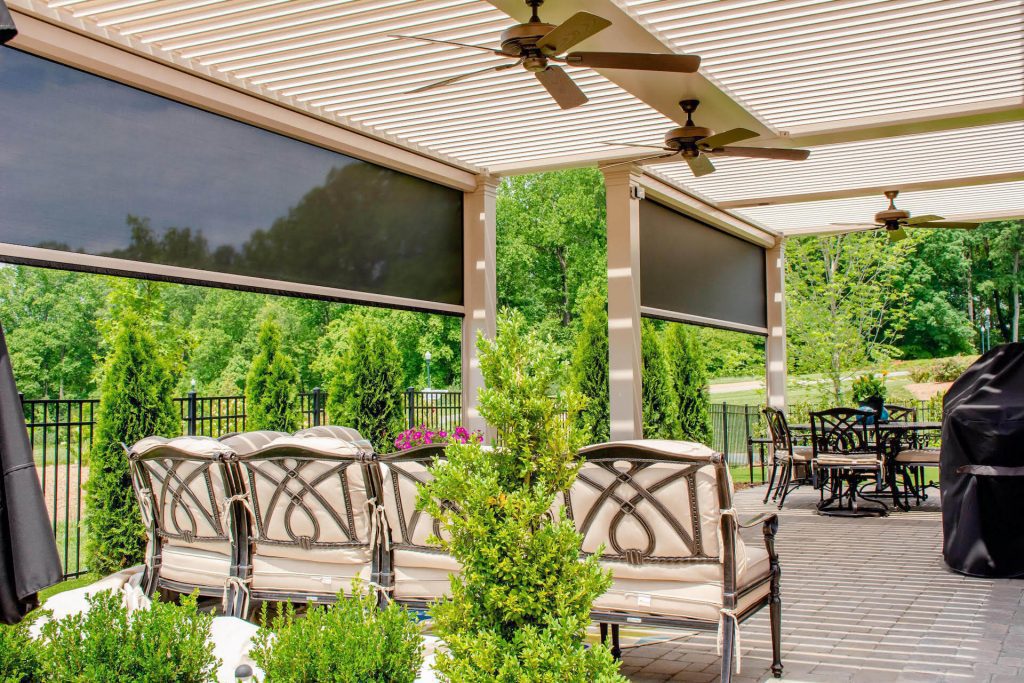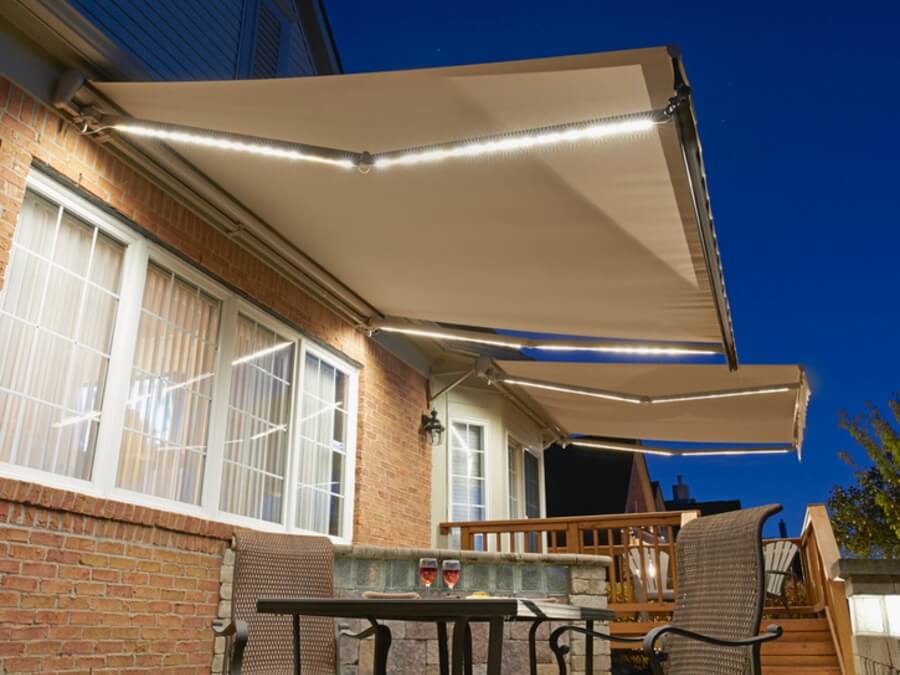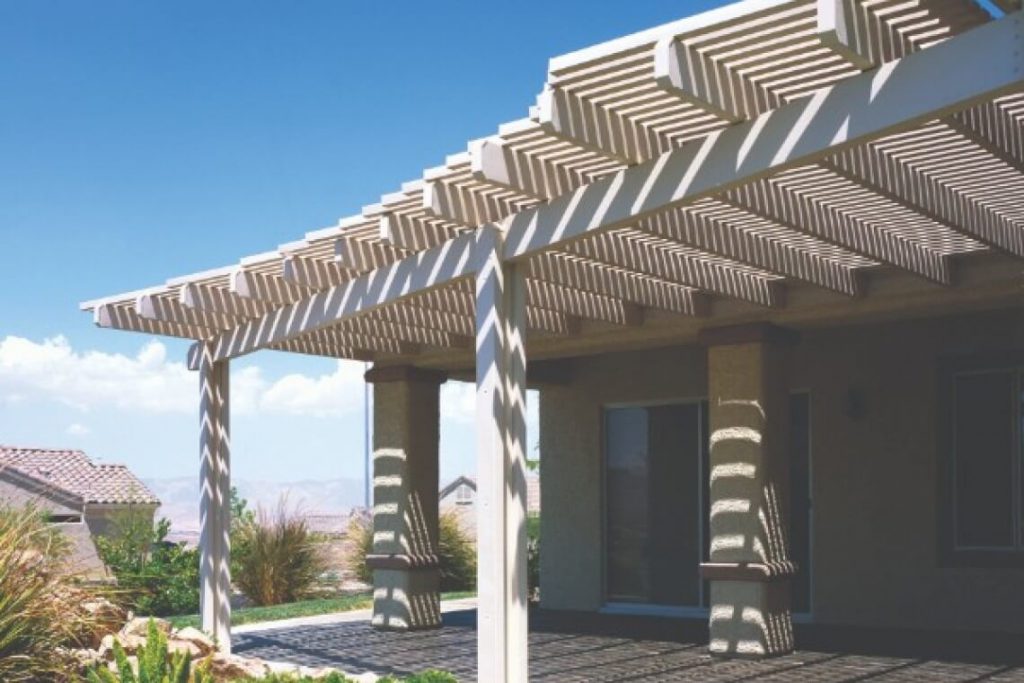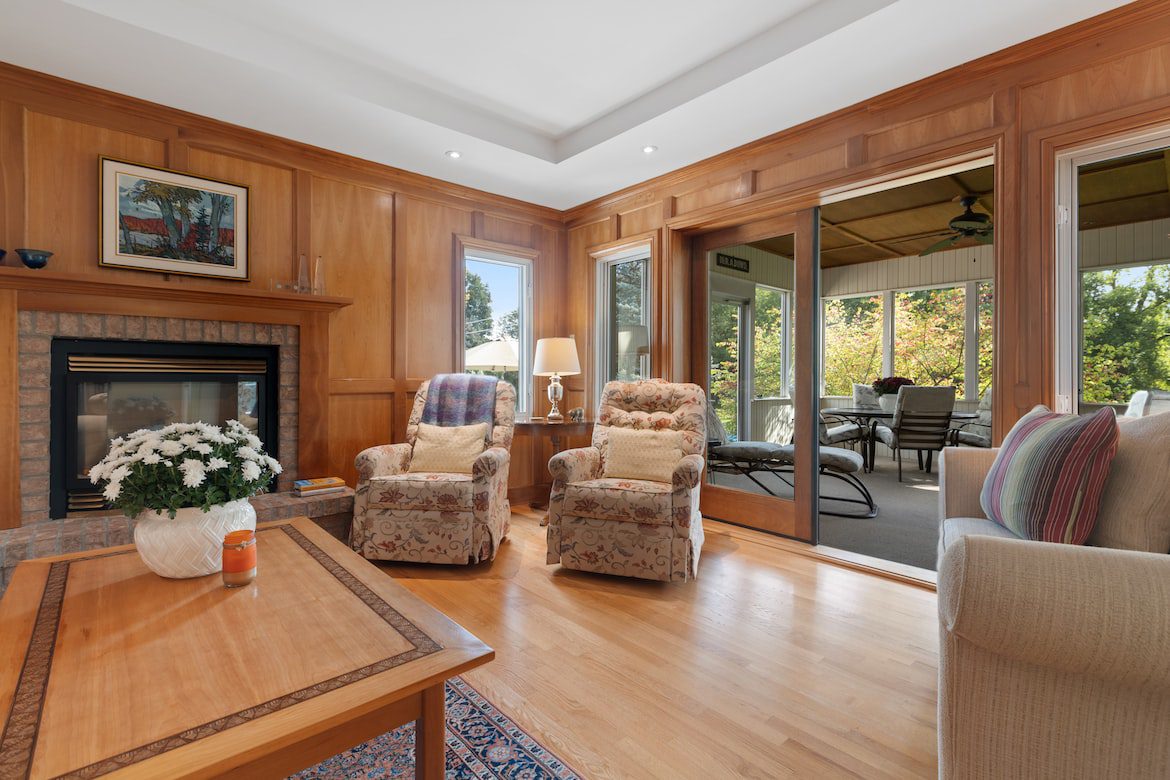
Rescreening Porch: A Complete Guide to Refreshing Your Outdoor Space
The weather is warming up across the country, and many people want to spend time outside. However, if your porch screen has worn out or become torn over time, you might want to rescreen the enclosure. There are many professionals that can rescreen your porch, but if you want to try your hand, but if you want to try your hand at replacing patio screens yourself, keep reading.
This guide will lead you through rescreening your porch step-by-step.
Rescreening Your Porch: Step By Step
Rescreening your porch is a relatively easy DIY project. If you’re looking for ways to save money and sharpen your home improvement skills, you may consider giving it a try.
Whether your old porch screen is torn, worn, or needs an upgrade to a more pet-resistant material, a porch screen replacement doesn’t take long to complete.
(Keep in mind that if only a single screen is torn and the tear is relatively small, it’s also worth looking into DIY screen repair rather than replacing the whole screen.)
Before you head to your nearest hardware store to gather supplies, take a moment to count how many screens you need to replace. If each screen is the same size, you’ll just need to multiply the measurements by the number of screens you need. If your screens come in different sizes, you’ll need to measure each and add the measurements.
For example, if you have six screens to replace and they’re all 2’x6′, you’ll need 12 sq ft of screen material for one frame, which is 72 sq ft for all six.
When shopping for material for your screen enclosure, make sure the roll you buy is at least as wide as the narrowest side of the frame. This way, you can make sure the material will fit the frame in one single run.
Materials You’ll Need
Before starting any DIY project, it’s important to make sure you have everything you’re going to need. In most cases, the following products cover all the supplies you should have on hand before rescreening your porch.
You can pick up most of these items at practically any hardware or home improvement store. Try Home Depot, Lowes, Ace Hardware, or even Walmart.
- Screen fabric
- (decide which type of screen you want to work with, for example, bug screen or sun control screen)
- Tape Measure
- White Pencil
- Screwdriver
- Scissors
- Tape (strong adhesive, like duct tape)
- Spline (check your existing porch screens for sizing information)
- Spline Roller
- Knife (one with a straight edge)
- Cleaning Supplies (if the area you’re working is particularly dusty)
1- Remove the Old Material
Your old porch screen (the one you’re replacing) is likely held in place by thin vinyl tubing called a spline. To start removing your old screen, pry the end of the spline out of the grooves in the screen frame using a screwdriver. Once you have freed enough spline to work with, gently remove the rest and pull the screen out of the frame.
Note: If your screen’s frame is dusty or dirty, use household cleaning products to remove debris before installing the new screen. Pay special attention to the grooves that the spine will need to fill. The cleaner the tracks are, the better the installation will be.
2- Measure and Prepare Your New Screen
If your old screen isn’t completely frayed, you can use it as a template to measure your new screen. Lay the old screen over the new screen and use the white pencil to stencil your measurements.
You can use the frame of your old screen to measure your new screen if the old material is ruined.
Give yourself at least an extra inch around the perimeter of your measurements so that you have room for adjustments.
Once you have the new screen measured (double-check for accuracy), use scissors to cut out your new screen.
3- Mount the New Screen
Hang the new screen over the frame you’ll be mounting it to. Tape the corners of your screen in place so that you don’t have to fumble with it during the fitting process. Check your work to ensure that you have plenty of screen on all four sides of the frame.
4- Roll the Spline
Keeping the screen between the frame and the spline roller, press the roller wheel into the groove of the frame.
Applying moderate pressure, slowly move the roller from your starting point to the opposite corner of the frame. When you reach the corner, gently remove the roller from the groove. Use your screwdriver to press the spline into the track around the corner, then reinsert your spline roller into the next piece of the frame. Continue rolling the spline until you reach the next edge, and repeat the process you followed before.
Repeat these steps until you have installed the spline all the way around the frame of the screen. From there, gently remove the spline roller and use a knife or scissors to cut the spline close to the edge of the screen. Press any exposed spline into the groove.
5- Remove Any Overhang
Test the integrity of your new screen by pressing on it. Don’t apply a lot of pressure; just press enough to verify that your spline was installed correctly. If your screen remains intact and none of the edges loosen, you’ve completed the installation process.
Now, use your knife to trim off any screen that extends beyond the frame. This will make your project look much neater and may prevent your new screen from loosening due to the overhand being pulled.
Once you finish rescreening your porch, you’re free to enjoy the outdoors without having to contend with bugs, harsh sunlight, or escaping pets.
Call Screenmobile
Are you looking to rescreen your porch but concerned about the cost and effort involved? Don’t worry. Screenmobile is here to help! While the blog provides a step-by-step guide for a DIY approach, we believe that entrusting the task to professionals like us is the easier and more efficient route. With Screenmobile services, you can sit back and relax while our experienced team takes care of everything. Rescreening a porch can be a hassle, from measuring and cutting the screen to installing the spline and ensuring a secure fit. By choosing our services, you can save time and avoid the potential pitfalls of a DIY project. We have the expertise and the necessary tools to get the job done right the first time. With a wide range of screen options to choose from, we’ll help you find the perfect solution for your porch, whether you need a pet-resistant material or want to upgrade your existing screens.
Contact Screenmobile today and let us handle your porch rescreening needs, so you can start enjoying the outdoors without any worries.

How to Choose the Best Motorized Screens for Your Home
Simply put, a motorized screen is a screen that retracts onto a roller with the touch of a button. Motorized retractable screens have lots of uses. They can turn your porch into a four-season room, give you additional sun or bug protection on your patio, provide privacy for your windows, or even enhance the functionality of a home theater setup.
What Is A Motorized Screen?
Simply put, a motorized screen is a screen that retracts onto a roller with the touch of a button. Motorized retractable screens have lots of uses. They can turn your porch into a four-season room, give you additional sun or bug protection on your patio, privacy, and versatility to your outdoor living experience. These screens are designed to retract onto a roller with the touch of a button, providing you with seamless control and effortless operation. Whether you want to transform your porch into a bug-free oasis, shield your patio from prying eyes, or create a flexible and adaptable outdoor space, a motorized screen offers the perfect combination of functionality and convenience. Let’s explore the benefits and features of motorized screens that can enhance your enjoyment of the great outdoors.
Pros and Cons of Motorized Screens
There are many advantages to motorized screens. And while we’ll be honest and say there are some drawbacks, these are few– and have easy workarounds!
Pros:
- Motorized patio screens are convenient to use. You don’t have to roll them up manually; you simply make the screen appear or disappear with the touch of a button.
- Motorized screens can give your porch and furnishings extra UV protection. Your furniture will last longer, and your paint, sidings, and other finishes will see less sun damage.
- A motorized screen can reduce your energy bills by keeping the sun’s heat out in summer and retaining heat during cold months.
- Vanishing screens look great– you don’t have to sacrifice your view for additional protection.
- Motorized screens can be linked with many home automation systems, allowing you to effortlessly transform your space into a luxury environment.
Cons:
- It may take time for your pets to get used to this type of screen (they may try to wiggle underneath it).
- Motorized screens require maintenance (but it’s easier than you might think).
- Motorized screens can have a high initial cost; however, they will serve their function for years to come.
Considerations for Choosing a Motorized Screen
There are lots of considerations when choosing a motorized screen. For example, porch and patio screens are different from garage door screens, and different types of screens have additional features based on their use and location. Here are some things you need to consider when looking for the perfect screen to fit your needs.
Spatial Layout
Large openings require specific types of motorized retractable screens. Not all screen types come in all-size options, so you have to make sure that you measure your porch or other outdoor space accurately. Some screens have custom widths up to 16 feet; others can go much wider, all the way to 40 feet or more.
Screen Model
A retractable screen, especially a large one, is going to impact the look of your home. Check your screen’s model’s customization options to see which one will be the best match for your home. You will often have different options for trim colors, motor housings, and more. The choice of screen fabric will also impact the way your home looks, so talk to your screen company to find the right solution for your space.
You may also find that your screen needs to be exceptionally durable. For example, if you have lots of inclement weather, high-traffic areas, or a commercial property, talk to your screening company about the best options for your space and if a heavy-duty screen is right for you.
Retraction Options
You have several choices for your screen’s controls. These include wall switches, remotes, wind sensors, and solar sensors. Automatic sensors will be more expensive but may be worth it for immediate protection.
Home Automation Options
Home automation integration is another important aspect to consider when choosing motorized screens. With the ability to seamlessly integrate them into your smart home system, you can control and operate the screens using your smartphone, tablet, or voice commands. This offers convenience, remote access, and the ability to incorporate the screens into scenes or routines alongside other smart devices. You can schedule the screens to automatically lower or raise at specific times, adding an extra layer of control and efficiency to your outdoor spaces.
Privacy
Some screens offer more privacy than others. If your patio or other outdoor space faces the street, you may want to consider a motorized screen that offers good privacy.
Specific Usage Requirements
Different types of motorized screens and spaces have different uses. For example, if you want solar protection on your otherwise uncovered patio, you need a solar screen. On the other hand, if you live in an area that’s prone to sudden weather changes, a screen system with automatic deployment based on sun and wind sensors might be your best option.
Budget Constraints
Motorized screens can be a large initial investment, but many owners find the improved outdoor space worth the price. Additionally, certain types of screens can even save you money. For example, sun control retractable shades can save you up to 25%-40% on your summer heating bills.
Protection
Motorized screens offer protection against UV radiation, insects, and heat, to an extent. This means that they can provide flexible protection for your outdoor storage, garage, or the space you plan to use. Think about the protection you need for your outdoor space, and check with your screen installer to ensure that your screen can do exactly what you need.
If it’s sun protection you need, you have many options. The best anti-sun screens can block up to 90% of the sun’s light, dramatically reducing glare and keeping your space cool on a hot day. Other options are more transparent but still do a great job of protecting your belongings.
Types of Motorized Screens
There are several types of motorized screens available to improve your outdoor space.
Retractable Screens
Many standard retractable screens can be motorized. This combines the convenience of a retractable screen with the ease of a motor, making your screen more user-friendly and effective. Retractable screens are highly variable, ranging from custom-cut screens for huge openings to smaller, motorized blinds and window shades.
Garage Screen Doors
A retractable screen door or screen garage door offers a convenient solution to bring fresh air into your home, enhancing comfort during the summer months while potentially reducing heating costs. These doors come in a variety of colors and can be customized with wood trim to seamlessly match your house’s aesthetic, preserving curb appeal and the overall visual appeal of your home. Let’s explore the benefits of screen garage doors and how they can enhance ventilation and energy efficiency while maintaining the desired look of your property.
Outdoor Shades
Outdoor shades protect your furnishings and home from UV damage. These shades can be used in your windows or other openings or can even be custom-made to match unique specifications. These shades can be programmed to open and close automatically based on the time of day, amount of sunlight, or wind strength. They come in different materials, such as fabric, wood, or aluminum, and can be customized to fit almost any opening.
No matter what your motorized screen needs are, Screenmobile has the solution. With locations across the United States, a friendly Screenmobile provider is close to you and can help get you on your way to professionally installed motorized screens for your patio, porch, or other outside space. Contact us today for a free estimate for the ideal motorized screen for your home.
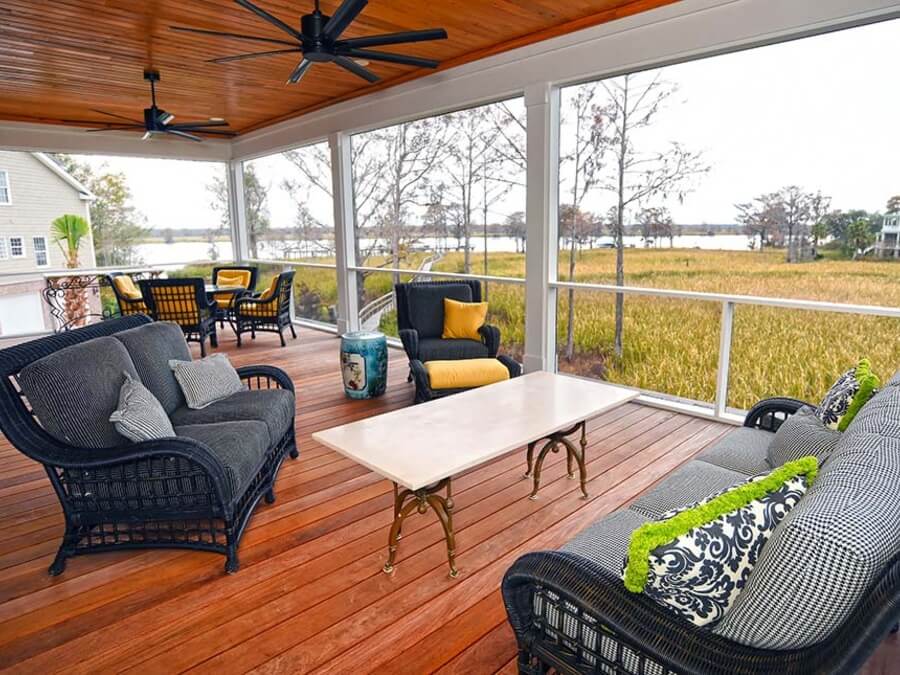
How to Choosing the Right Screen Room Options
The weather is warming up all over the country and people are getting ready to spend more time outside. While the prospect of sitting on your porch sounds great, past seasons will remind you that there are challenges that come with trying to relax outdoors. Excessive heat, bright sunlight, bugs, wind, and nosy neighbors can ruin what should be an enjoyable experience.
To combat these issues, you may be planning to have a screen room constructed on your property. If you’re exploring your options but you’re not sure which solutions you need, keep reading. This article will cover a few common screen room options as well as the key factors you should consider when making plans.
Screen Room Options
Screen rooms are designed to allow fresh air to blow through an otherwise enclosed room, which is what separates them from a sunroom (which is glass-enclosed). Depending on several factors, homeowners can choose a variety of options to create the most ideal screen room for their needs.
If you’re planning to have a screen room constructed in or around your home, take a look at these screen room options for ideas on the best way to proceed.
Retractable Screens
Retractable screen systems can be either manually controlled or motorized, so these screen room solutions are developed with the intention of meeting a variety of unique needs.
Retractable screens are custom-fitted into spaces the homeowner desires (such as archways or windows) in order to create a screen room. The screens can be retracted when they’re not in use to open the space completely or lowered to allow fresh air to flow through the area. This option provides the best of both worlds, as the screens block excessive sunlight, heat, and insects while allowing homeowners to enjoy the tranquility of the outdoors.
Additionally, some screens are designed to improve the homeowner’s sense of privacy without obstructing the view of any surrounding landscapes.
Screen Doors
A screen door can serve several purposes including sun protection, security enhancement, and pet safety. Depending on what the homeowner wants his or her screen door to accomplish, one of several screen door options may be appropriate.
Heavy-duty pet-proof screens allow dogs and cats to get fresh air and have fun playing outside the house without introducing any risks to the animal’s safety. These screens are incredibly durable, so dogs and cats won’t be able to break through if the mail carrier drops by.
Screen doors also improve home security measures by allowing airflow to pass through a screen room without opening the rest of the home to intruders. Screen doors can be locked so that the homeowner and his or her family can relax without interruptions or uninvited visitors walking in off the street.
Like other screen systems for screen rooms, a screen door can also control how much heat and sunlight passes into the room.
Screen doors can be retractable, sliding, or swinging so that they align with the home’s space availability.
Outdoor Shades
Exterior solar shades can turn an ordinary porch or patio into a screen room quickly and easily, and the shades can be rolled up and away when they’re not in use.
https://www.screenmobile.com/our-products/porch-and-patio/exterior-shades/ without forcing the household to contend with insects, sunburns, or heat-induced headaches. Instead, with the shades in place, having a get-together, barbecue, or relaxing afternoon outside is easy regardless of how hot or windy the weather might get.
Factors To Consider
While each component of a screen room sounds perfect in theory, it’s important for homeowners to plan their screen room construction project with a few things in mind.
Screenmobile offers a wide variety of screen room solutions and each one is designed to meet a homeowner’s general needs. That said, certain products will be a better fit than others, depending on the features and functions our customers want.
Keep these three factors in mind when you’re coming up with screen room ideas.
Space Layout
Most screen room solutions come in different sizes, so they can be customized to fit a home’s unique layout. For homes with smaller screen room areas, smaller screens can be installed. For homes with massive porches that need to be screened in, a larger, more powerful screen system may be the best choice.
Additionally, if the home in question has high ceilings and archways, opting for motorized retractable screens may be more convenient than choosing manual screens, as it may be difficult to reach the edge of the screen if it retracts farther than the height of a typical adult.
Usage Needs
Homeowners living in locations that frequently experience harsh weather conditions and storms may benefit from choosing storm screens, doors, and windows. This way, wind, rain, and excessive heat won’t damage the screens encasing the screen room.
If security is a concern, choosing a metal screen door may be a better option than one with vinyl screening. Doors with metal screens still enable plenty of fresh air to blow through, but they keep homes safe and secure in the process.
The intended use for an individual’s screen room should play an important role in determining which product and material is best suited for the project. If you’re not sure exactly what sort of screen room solution you’d like, our customer service team can walk you through your options and help you make an informed decision.
Budget
Finally, the costs associated with creating a screen room will be an essential part of your plan. Some screen room solutions are more affordable than others, and depending on the size of the area you’re working with and the intended purpose of your screen room, you might be able to save money taking one route over another.
If you want to talk with an expert about your screen room options or you’d like to get started with your project, reach out to Screenmobile. Our team of experts will work with you to make sure you have everything you want in a screen room.
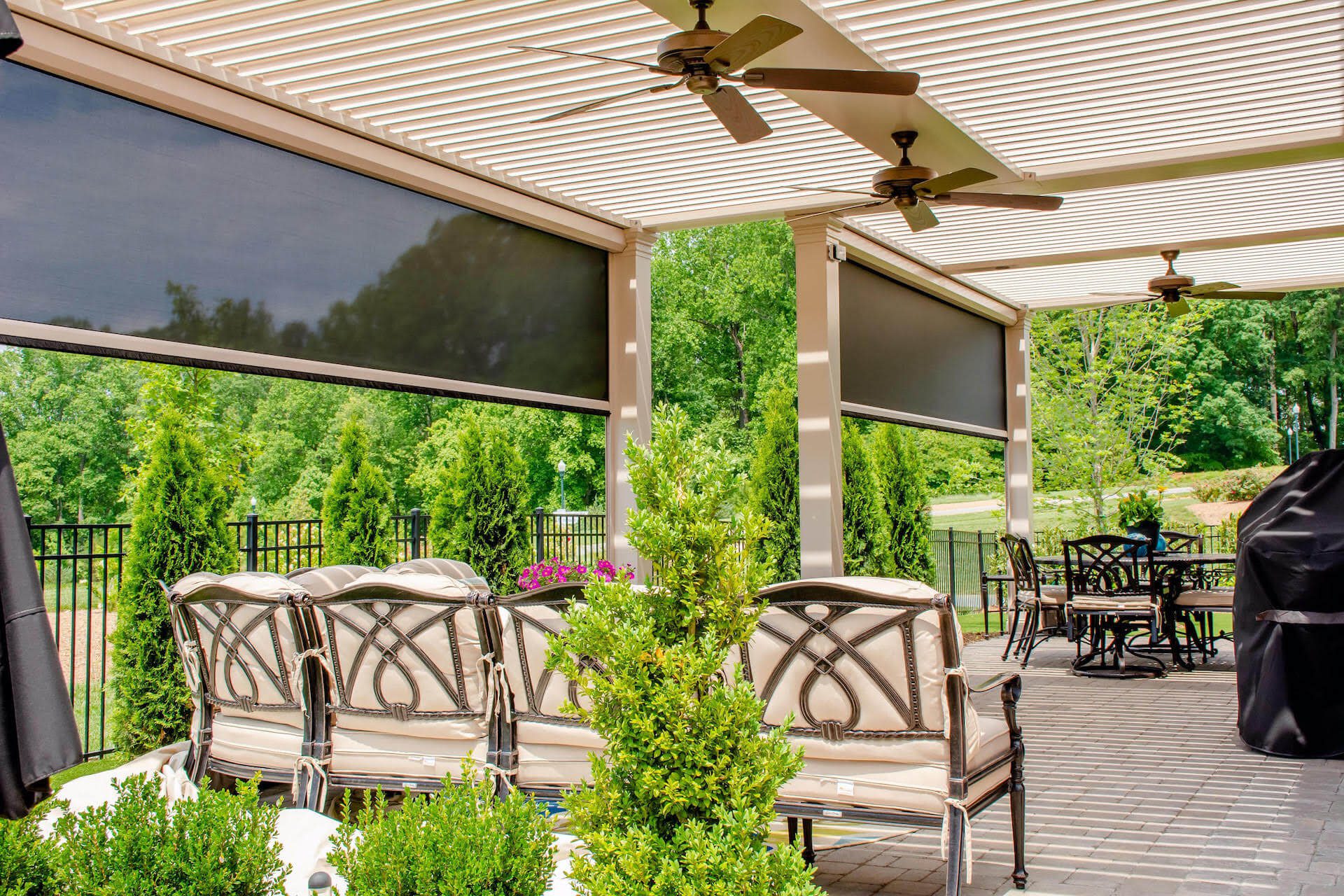
Choosing the Right Sun Control and Shading Devices for You
As summer draws near, property owners are feeling the heat—and not just from the temperature. High energy bills can seriously dent your budget. But there are ways to keep your space cool and comfortable without breaking the bank.
One solution is to invest in sun control and shading devices, which reduce glare, lower indoor temperatures, energy consumption, and much more.
In this guide, we’ll explore the different types of sun control and shading devices available and provide tips for choosing the right one for your property. Read on to learn more!
Understanding the Importance of Sun Control and Shading Devices
Sun control and shading devices are designed to reduce the amount of solar heat that enters a building through windows and other openings. Solar heat can be overbearing, especially in buildings with large windows or those located in hot climates. And blocking or reflecting solar heat can significantly reduce cooling loads and energy consumption.
Alongside reduced cooling loads and energy consumption, sun control and shading devices also help improve indoor comfort. Reducing glare and controlling solar heat gain can make maintaining a consistent indoor temperature easier, reducing eye strain, and improving visual comfort.
These devices can also help to protect furniture, carpets, and artwork from fading due to exposure to sunlight.
Sun control and shading devices can also improve natural lighting in a building. They help diffuse direct sunlight, reducing the amount of harsh, direct light while allowing natural light to filter through. This can create a more pleasant and inviting environment while reducing the need for artificial lighting.
Types of Sun Control and Shading Devices
Several unique types of sun control and shading devices are available—here are some of the most popular types:
Window Solar Screens
Window solar screens are popular for those looking to reduce solar heat gain, glare, and harmful UV rays. These screens are installed on the outside windows and work by blocking sunlight before entering the building. They come in a variety of colors and can also offer privacy.
Motorized Shades
Motorized shades are convenient for those who want to easily control their shades. These shades can be programmed to open and close automatically based on the time of day or the amount of sunlight. They come in different materials, such as fabric, wood, or aluminum, and can be customized to fit any window size or shape.
Blinds
Blinds are versatile shading devices that can be adjusted to control the amount of sunlight entering the room. They come in various materials, such as wood, aluminum, or fabric, and can be vertical or horizontal. Blinds are popular in residential settings but can also be used in commercial buildings.
Exterior Shading Systems
Exterior shading systems are mounted outside a building and work by blocking sunlight before it reaches the glass surface. They come in different types, such as fixed or retractable, and can be made from materials such as metal or fabric. Exterior shading systems can significantly reduce solar heat gain and glare and can be an excellent option for buildings with large windows.
Custom Awnings
Awnings are another type of exterior shading device that can be installed over windows, doors, or outdoor spaces. They provide shade and protection from the sun and can come in various materials, from fabric to metal. Awnings can be retractable or fixed, and they can be motorized or manual.
Factors to Consider When Choosing a Sun Control and Shading Device
Here are some of the most important factors to consider when choosing a sun control and shading device for your building:
Location
The location of your building can significantly impact the type of sun control and shading device you choose. Consider factors like latitude and sun angles to determine the amount of solar heat gain your building receives.
Building Orientation
The orientation of your building can also impact the amount of solar heat gain and glare. East and west-facing windows receive the most direct sunlight while north-facing windows receive the least.
Architectural Style
The architectural style of your building can also impact the type of sun control and shading device you choose. Consider options that complement the style of your building while also providing the necessary shade and solar control.
Window Type and Size
The type and size of your windows will also impact your choice of sun control and shading device. Decide whether your windows are operable or fixed and whether they are located in hard-to-reach areas.
Energy Efficiency Requirements
If energy efficiency is a priority, consider options such as solar control films and exterior shading systems that can significantly reduce solar heat gain and energy consumption.
Cost
Finally, consider the cost of different sun control and shading devices and weigh the upfront costs against long-term energy costs and maintenance savings.
Choosing the Right Sun Control and Shading Device for Your Building
When choosing the right sun control and shading device for your building, start by assessing your building’s location, orientation, architectural style, and specific needs and preferences.
You’ll also want to compare the different types of sun control and shading devices based on their features, benefits, and costs. At this point, decide which factor is the most important to you, and let that clear your path toward your decision.
If you’re on the fence about this decision, consider the long-term maintenance costs and energy savings each option provides. The cost-effectiveness alone is a great perk, but consider the long-term benefits of high-quality sun control we’ve laid out in this guide.
Smart Shading, Lower Bills
Don’t let the summer heat get the best of you and your property. Choosing the right sun control and shading device for your building is a crucial decision that can significantly impact your indoor comfort and energy consumption.
With a wide range of sun control and shading devices available, our team at Screenmobile can help you choose the perfect solution for your building.
From window screens to porch enclosures, doors, and more, Screenmobile is here to help you love your home again. Check out our products to see the options available for your space, and find your nearest Screenmobile location to call for your free estimate!

Different Types of Screens for Large Openings
What You Need to Know About Large Screens
Large openings can be difficult to manage, they are a complete free-for-all for mosquitos and other bugs while also being difficult to cover or shade from the weather. They are also relatively more complicated to install as larger spaces mean different dynamics in terms of holding up the screen, access or moveable sections, and how it looks compared to the rest of the house. However, screening off a large opening can deliver a whole range of benefits for yourself, your family and your home. Here are some important considerations to keep in mind:
Opening Up a Larger Living Space:
Screens for large openings can completely transform the outside spaces of your home, from very seasonal or time-of-day-dependent to 3-season or year-round living areas. As opposed to smaller screens on windows or doors, screens for large areas can create significant space around your home that’s free of bugs and relaxing to enjoy. What’s more, the right kind of screen can also give UV and other weather protection to the furniture and decoration there.
Choosing a Style That Works:
Another important consideration of screens for large openings is that they are very noticeable. A poor job or colors and materials that don’t match your home will stand out, and you’ll have to see them every day. Take the time to talk to a professional and have a good look at what works best for your own personal taste as well as the functionality of screens for large openings.
Quality Considerations:
Naturally, screens for large openings will have a lot more area and material than smaller screens, which means there is a much greater chance of wear and tear. Add pets into the mix, and that’s almost a given. While it is common to have your screen repaired relatively regularly, choosing a long-lasting material from the initial installation phase will keep your large screen functioning as intended for longer.
Mind the View:
Another aspect to keep in mind when deciding on any screens for large openings is what things will look like from the inside looking out and vice versa. You might be in a very scenic or picturesque area and used to gazing out across nature from your home’s windows, so you’ll want to ensure that you use screen material that won’t affect that. On the other hand, the space you’re screening in may face onto the street, so you’ll probably want to pick a material that diminishes vision from the outside in.
With those considerations in mind, let’s take a look at some of the different types of screens for large openings that are commonly installed.
Different Types of Screens for Large Openings
Retractable Screens
One of the most common screens for large openings due to their simple design. Basically, the screen rolls out from a compartment on the top side of the opening, with the user able to pull the screen down fully or leave it at an adjustable height. Retractable screens are popular for their great versatility. They can be operated manually or motorized and can cover spaces over 40 feet, making them excellent screens for large openings. They are also very convenient and easy to use; just pull them down when you need them, either for sun or bug protection, and put them back up when you don’t.
Bi-Fold Screens
Bi-fold screens are a configuration of connected screen panels that are hinged in the middle, allowing them to completely fold back on themselves, opening up the space entirely. They are excellent screens for large openings as they allow you to maximize the natural light and airflow into the space when you want it and take up less space when put away than some other types of installations. Even though they are for large openings, they are quite easy to maintain as any damage to one panel will only require that to be repaired rather than an entire 40-foot screen.
Sliding Screens
Sliding screens for large openings involve installing two tracks at the top and bottom of the opening (the floor-level one is almost always sunken). These tracks allow the screens to be pulled open or brought together as needed. Different configurations also allow customization, such as tilting the to let in air but not sunlight. Space-saving designs can include the sliding screens going all the way back into the wall cavity while in terms of energy efficiency, using materials that block heat transfer means you can save on your a/c bills in summer and heating bills in winter.
Accordion Screens
Accordion screens are made with a very fine screen mesh which expands to cover the opening needed but can also retract very easily into the door jamb, where they’ll only take up a few inches of space. The concept of accordion screens for large openings, though using much thicker material, has been around for centuries, but modern technology has allowed the screens to deliver full functionality, that is, protecting your outdoor space from bugs and the sun’s rays, without compromising vision or airflow. Accordion screens are lightweight and easy to manage, so can be quickly expanded or retracted without much effort.
Panel Screens
For spaces such as porches or verandas that already have to cover up to waist height, panel screens can be fitted to screen off the rest of the area, stopping mosquitos but still allowing the air to flow and light to come in. Panel screens for large openings also come in floor-to-ceiling configurations, but it’s less common. The great thing about panel screens is that they are hugely customizable, allowing all kinds of different materials depending on your needs and the look you are going for. Panel screens can also be custom-made to fit virtually any space, so you don’t have to worry about any awkward angles or things not fitting right.
Conclusion
Even very large spaces can be screened off, allowing you and your loved ones to relax and enjoy the fresh air outside without the bugs and high sun that would otherwise come with it. When choosing screens for large openings, it’s important to consider how the style will fit your home, as it’ll be a major visual aspect of your house. The type of screen that you choose will come down to your personal taste but also the space available and your needs.
Bi-fold screens and accordion screens can be opened across your space opening horizontally or pushed back into the door jamb or wall cavity to completely open it up. Retractable screens are generally ceiling-to-floor and can be pulled down vertically as far as required while sliding screens can also be customized to adjust position when set in place. Panel screens have less mobility but can be custom-built to fit whatever space you need.
Before starting the process of installing screens for large openings, it’s always good to talk with the experts and at Screenmobile, we love helping our customers to find exactly the right solution for their own personal style and requirements. For a free no-obligation consultation, you can find your local Screenmobile operator here.

Honored and Proud: Screenmobile Joins Entrepreneur’s Hall of Fame with 25 Consecutive Years on Franchise 500 List
We are ecstatic to share that Screenmobile has been inducted into Entrepreneur’s esteemed Hall of Fame, reserved only for franchise systems that have achieved the remarkable feat of making it to the Franchise 500 list for 25 or more consecutive years. We are proud to have ranked #163 out of 500 brands in the 2023 Franchise 500, marking our 25th successive ranking on this coveted list.
This recognition is a testament to the dedication and hard work of our team, franchisees, and loyal customers who have contributed to our success. We are committed to providing top-notch services and products that meet the ever-changing needs of our customers, and we are grateful for their continued trust and support.
Entrepreneur’s Franchise 500 list is among the world’s most rigorous and competitive franchise rankings. It evaluates franchise systems across five primary categories: Cost and Fees, Size and Growth, Support, Brand Strength, Financial Strength, and Stability. With 25 consecutive years of ranking among the top 500 franchises, Screenmobile has consistently excelled in these categories, a feat that only 49 other franchise brands have achieved.
 Why is this significant?
Why is this significant?
- This recognition affirms Screenmobile as a stable and successful business opportunity—one that has stood the test of time in markets across the country.
- It recognizes Screenmobile as an industry leader in the franchise space.
- It demonstrates a proven track record of sustainable growth. We first ranked on the Franchise 500 list at #390 with 51 franchise units. Today, our ranking and business size have increased to #163, with 149 franchise units nationwide!
- It shows our commitment to supporting our franchise owners by providing them with the training, resources, and guidance they need to be successful in their businesses.
“Throughout our history, it has been our legacy to provide our customers with the highest quality products, coupled with superior customer service,” says Scott Walker, co-founder and Brand President of Screenmobile. “Over the years, we have been fortunate to partner with hundreds of like-minded individuals to help us build the Screenmobile brand and accomplish this goal. We are honored to be recognized as a long-standing industry leader and look forward to the growth and opportunities still ahead!”
We are thrilled to have been inducted into Entrepreneur’s Hall of Fame, and we are deeply grateful to our team, franchisees, and customers for their unwavering support and trust in our brand. Our 25 consecutive years of ranking on the Franchise 500 list is a testament to our commitment to excellence, innovation, and customer satisfaction. We are proud to be recognized as a stable and prosperous business opportunity, an industry leader in the franchise space, and a company with a proven track record of sustainable growth. We remain committed to providing our franchisees with the training, resources, and guidance they need to succeed in their businesses and deliver top-notch products and services to our customers. We are excited about the future and the many opportunities that lie ahead. Thank you again for your support and trust in Screenmobile.
To view Screenmobile in the Franchise 500 Hall of Fame list, visit https://www.entrepreneur.com/franchise/introducing-the-franchise-500-hall-of-fame/444749.

Up Your Relaxation Game with Outdoor Sun Shades
How a Shade for Your Sun Duck Can Help You Get the Most Out of Your Porch
Relaxing on the deck is a pastime honored by many homeowners, no matter the season. However, one thing might be stopping you from kicking back and relaxing on your porch: too much sun.
While soaking up the summer sun is undeniably pleasant, you need protection from harmful UV rays while you lounge. Consider a sun shade for deck lounging to get the most from your porch.
Whether you want to kick back without getting overheated or soak up some sun rays without harming your skin, a shade for your sun deck could be just up your alley. This article will explore the advantages of a sun shade for your deck or patio to ensure you enjoy every last second of the blissful summer.
What are the Benefits of a Sun Shade for Deck Lounging?
Before we get into the nitty-gritty of what to expect when you shop for sun deck shades, let’s explore the benefits of these shades to help you understand how sun shades will boost your summer fun. Some of the core benefits of a sun shade for deck lounging include the following:
- Protection from harmful UV rays
- Year-round use, so you can lounge no matter the season
- Protection against other weather conditions, such as the summertime rain
- A stylish addition to your sun deck
How Much Does a Sun Shade for a Sun Deck Cost?
The cost of a sun shade for your deck will vary depending on a few factors. For example, the size of your deck and the number of shades you’ll need can influence the cost and the installation process.
However, many cost-effective providers are available to help you out and give you a lay of the land. If you’re curious about how much your sun shade installation will cost, you can request a free estimate from our expert team.
How Long Do Sun Shades Typically Last For?
The amount of use you’ll get from your sun shade depends on your provider and whether they use high-quality, durable materials. For instance, Screenmobile provides long-lasting, durable solutions like our long-lasting, custom-built Sunair shades.
Generally, you can expect the average sun shade to last up to ten years. Given that our sun shades can be used to enjoy your deck year-round, there’s no question that you’ll get plenty of long-term use from your newest home addition.
What is Maintenance Like for Sun Shades?
Maintenance will vary depending on the model and material of your sun shade. However, Screenmobile offers low-maintenance solutions to ensure that your sun shades don’t become a hassle to take care of and that you can enjoy everything your deck has to offer.
When you choose Screenmobile, you can expect sun shades that are easy to maintain and only require cleaning once or twice each season. This infrequent maintenance ensures that no leaves or debris are stuck to your screen that could get in the way of your relaxation time.
If you’re worried about the weather causing damage to your sun shades, we’ve got you covered. Our sun shades are made from durable materials, and many models include sensors that identify high winds and poor weather conditions to retract your shades before they tear. Also, rain won’t harm your sun shades, making them perfect for any condition.
What About the Installation Time?
Screenmobile professionally installs every screen we sell to ensure you can start reaping the benefits of your sun shade for deck lounging as soon as possible. While there isn’t a specific period for every installation, our team will install your screen efficiently and effectively to give you the best shades with the shortest installation time.
What to Consider When Choosing a Shade for Your Sun Deck
Ready to jump in and get started on your sun shade installation? There are a couple more things to keep in mind before you make your decision. When choosing a shade for your sun deck, keep the following factors in mind:
- Your personal taste: you want your sun shade to reflect the beauty of your home and suit your overall aesthetic. Your taste will influence your shades’ material, color, and style. Whether you want a vintage look or a sleek, modern option, Screenmobile can help you find what you want.
- Your location and the climate: Your choice of a sun shade might differ depending on your location and the weather you receive. If you’re in an area with fierce sun, you might consider a tight mesh shade or a PVC-coated polyester material. If you’re in or near a city, you should consider fiberglass shades to quickly clean your shades when necessary.
- Visibility: your sun shade should let in as much or as little light as possible. Our customized solutions ensure that you have an appropriate visibility level. Whether you want to see everything outside your shade or as little as possible, we can help you find what you want.
Why Screenmobile is the Top Choice for Your Outdoor Sun Shades
Ultimately, there are endless possibilities and advantages when it comes to a sun shade for deck lounging. From protecting your skin against UV rays to protecting your home against harsh summertime rain, you’ll love your shades.
To maximize the potential of your newest home addition, you must choose a provider with your best interest in mind. Given the numerous factors that contribute to your decision, you’ll find the selection and installation process much simpler when you work with the experts at Screenmobile.
Screenmobile is a premier provider of high-quality, long-lasting sun shades and screens to help you enjoy your deck year-round. Our durable materials and stylish, custom designs will satisfy your vision for your deck.
Ready to get started? We’re here for you. Get in touch with your local Screenmobile installer today to discuss your many options and find out everything about the sun shades we offer, or contact us for more information about what to expect when you choose Screenmobile.
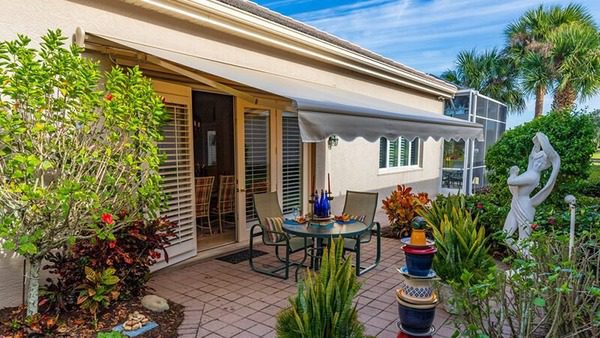
The Pros and Cons of a Front Porch Awning
Adding a front porch awning to your home is an increasingly popular home improvement project. A front porch awning basically adds a water-resistant covering over your porch, often alongside a raised deck or veranda if one isn’t already there. This creates a sheltered zone from weather conditions such as sun, rain and snow, meaning you can sit outside your home in virtually all seasons.
When it comes to front porch awnings, the options are endless! With various materials and types of awnings available – fixed or retractable – you’re sure to find the perfect one to complement your home’s style.
Yes, a front porch awning may require a bit of an investment, but think of all its benefits! Not only does it provide shade and protection from the elements, but it can also add value and curb appeal to your home.
And with some care and maintenance, your front porch awning will last for years. Plus, it’s a great way to enjoy the outdoors and entertain guests while staying cool and comfortable.
So if you’re on the fence about whether or not to add a front porch awning, consider all the positives and imagine yourself relaxing in the shade on a hot summer day. It’s a worthwhile investment that you won’t regret!
A Front Porch Awning: The Pros
Front porch awnings deliver several benefits for homeowners, which is why they have become so popular; here are some of the biggest ones:
Weather Protection
The most apparent advantage of a front porch awning is that it keeps the worst of the outside weather conditions off your porch. This could be keeping the sun’s glare out of your eyes and UV rays off your skin or sheltering you from rain and even snow, meaning you can create a comfortable outside living space, whatever the weather. So don’t let the weather ruin your outdoor retreat! A front porch awning is your key to creating a cozy and inviting atmosphere where you can relax and unwind without worrying about the sun, rain, or even snow. So take control and create your own slice of paradise today!
Energy Savings
It mightn’t be the first thing you think of, but a front porch awning can help you save money on energy costs. That’s because awnings help reduce the solar heat gain of your home by up to 20°F, meaning you spend less on AC to cool your interior rooms. While this means awnings deliver benefits all over the country, they can be especially noticeable in sunbelt areas, with energy savings of up to 46% during sunny times, translating to over $200 off your electricity bills.
Shielding Outdoor Furniture
When outdoor furniture or decorations, such as carpet or painted walls, are exposed to the sun over long periods, they can get color-bleached and become dry and brittle. Installing a front porch awning means you can keep the harmful UV rays and heat off your home’s property as well as its people.
Increased Curb Appeal
The design choices that have become widely available, especially in recent years, mean that a front porch awning isn’t just purely functional; it’s also a chance for stylistic expression. A beautiful awning setup makes your home look better, which, combined with the extra comfortable living space created, adds value to your home.
Widely Customizable
There are numerous styles of awning and materials you can use to get the look you really want for your front porch. The first step is choosing from fixed awnings or retractable, and if those retractable awnings should be operated manually or motorized. Then you have your materials; choose from canvas or PVC-coated nylon or a sturdier choice of metals or hard plastic. There’s also the angle of the awning and, of course, the colors of the primary material and trim to consider. Pretty much whatever kind of front porch awning you want, your provider should be able to deliver.
A Front Porch Awning: The Cons
It’s important to know all sides of the story, including the potential downsides of installing a front porch awning. While the benefits are plentiful, it’s only fair to mention a few of the trade-offs:
Cost
The price of a front porch awning can run from $500 to $10,000, with an average installation setting you back around $2,500 – $3,500. This isn’t a small amount of money, especially if your heart is set on a motorized retractable awning covering a very large space. The price can be quite a significant consideration.
Maintenance and Cleaning
Unlike your slate or tiled roof, the materials used for the awning are liable to collect dirt and grime over the course of the year and need regular cleaning. Long-term, your front porch awning will also pay the price in wear and tear for keeping the worst of the weather, such as strong winds or heavy snowfall, off your porch. This can mean that the material needs replacing along with its structure, especially the retractable arms, if exposed to too much weight or pressure. The cost of fabric repair or replacement can be up to $1,000, while the arms, brackets and springs that support it can also cost hundreds of dollars to replace.
Compatibility
Unfortunately, depending on your home’s location and how it’s built, a front porch awning or the specific type you want may not be possible. Section 3015 of the International Building Code (IBC), which is in place in most states, including California, Arizona, Georgia, and Florida outlines what can and can’t be done with front porch awnings.
Final Thoughts on Porch Awnings
A front porch awning can be a great addition to your home and has become a popular home improvement project nationwide, especially in the South and Southwest. A front porch awning protects you, your family and your guests from the worst elements, whether it’s searing sun or driving rain. Additionally, an awning can also save you money by reducing interior heat and lowering energy bills, as well as raising the value of your home. However, the drawbacks of the front porch awning include potentially high initial cost and the fact that it will need regular cleaning and possibly replacement parts or repairs.
Whatever your vision for a front porch awning for your home, it’s always best to talk to the professionals to see what your options are. At Screenmobile, our operators install awnings year-round in your area and can tell you all you need to know with no obligation. To find out more, contact your local Screenmobile operator now.
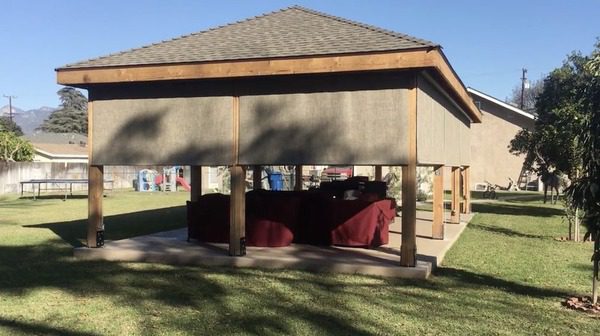
A Guide to Sun Shades for Patios
Sun shades for patios and other outdoor areas can completely transform areas of your property, making them more enjoyable and keeping the worst of the sun off. There are a number of different types of shade structures and types that you can put up to give solar protection to outside living spaces, with something out there to suit every style, purpose and budget.
If you’re interested in putting up new solar shades or replacing old ones, here we’ll give you a complete guide to everything you need to know, from the benefits of shades, the different styles and materials they come into what you need to know when picking the right ones for you.
Benefits of Sun Shades for Patios
Naturally, when you think about sun shades for patios, you think of getting the glare of the sun off your face and keeping an outdoor space cool. Those are, of course, major benefits, but that’s not all that you get out of your outdoor shades, they also provide:
- UV Blocking: Staying out of strong sunlight for extended periods is better for your skin, and people aren’t the only ones affected by UV rays. Sun shades for patios help filter light to protect your outdoor furniture and decoration from sun-bleached throughout the year.
- Style Expression: Sun shades for patios, porches or windows are an opportunity for you to express yourself and create the vibes that you want for your home. So long as they’re all in line with local building codes you have a vast array of possibilities for your shades, how they stay up and what materials are used, allowing your creative imagination to run free.
- Reduced Energy Usage: It might not be the first thing you think of, but sun shades for patios and other areas can cut down your utility bills. This is because shades have been show to significantly reduce the amount of solar energy reaching your home, so lowering internal temperatures means you don’t have to run your AC as much. Even when you’re not outside, your outdoor shades are being of use.
- Keeping Out Other Weather: The first thing that comes to mind about an outdoor shade is how it will protect you, your family and your friends from the sun’s heat. However, many sun shades for patios also equally double up to protect from other weather that could also make it uncomfortable outside. Depending on the type of shade, you can also keep off rain, wind or even snow (if that’s ever a problem).
- Spaces for All Seasons: With the right sun shades for patios, ones that give extra protection against other types of weather, you’ll find that your outside areas can be enjoyed well outside the normal sunny windows of late spring, summer and early fall. Extending the use you get out of your whole property means you’re getting the most value out of those spaces as possible.
Different Types of Sun Shades for Patios
As mentioned, there is a huge variety in the types, styles and materials of sun shades for patios and outdoor areas. Here we’ll take a look at some of the most common ones that also come with a range of customizable options:
Awnings
Awnings are among the most classic sun shades for patios due to their simplicity and effectiveness. An awning will usually extend out horizontally from your home to cover the space you want shaded. There are a number of ways the awning can be supported, making it permanent or semi-permanent, or you can even use it with roller shades to move and adjust it whenever you want. Awnings can also come in a variety of materials, with rigid ones made of aluminum or flexible ones of cloth or nylon, with many providers allowing you to pick the color or style that suits you.
Learn more about building permit requirements for awning installation.
Sail Shades
Sail shades can be a stunning stylistic feature in themselves. With a breeze rippling through them, they evoke seaside imagery. In addition, sail shades are more versatile than awnings, as they can be affixed to trees, posts or hooks extending from your home’s walls. The size of the sail shade will depend on what area you want covered, but it’s always possible to overlap them in different directions, which can give greater coverage and create a different look.
Retractable Sun Shades
Also known as roller shades, retractable sun shades for patios give you maximum control over how much sun is getting through to your outdoor spaces. These can come in vertical or horizontal forms and a variety of materials. They can even be operated manually, electronically or automatically. With roller shades, you get to decide what the weather’s like in your (very) local area.
Patio Covers
Patio covers try to use as much of your existing architecture as possible to put a shade over your head, kind of like a porch area. The patio cover will be up all year round, which makes it great for protecting your outdoor furniture or a barbecue from the elements, no matter what the season. Patio covers also come in various styles, for example, being latticed or full coverage or even insulated roof panels to allow use in colder months. Sometimes this might require extra support at the front, but it’s possible to install a patio cover without any major extra structural work.
Pergolas
Pergolas are one of the best sun shades for patios but can require a bit more work depending on the type you put up. A pergola shades an area from the sun by basically creating a roof space that can be permanently or temporarily covered. This roof is held up by pillars, which is where the big decisions come in. Common construction approaches can make these pillars out of wood or stone, which really creates the vibes of a secluded hideaway right there on your patio. More simply, the pillars can be metal or plastic, which can be much cheaper while still giving the same shading effect and giving your patio a space to relax in.
Deciding on Sun Shades for Patios
A range of factors will go into your decision about which type of sunshade you want. The size and shape of your patio, combined with the architecture of your home, may have a big impact as it can enable or prevent certain types of shades, like awnings or patio covers. It also depends on what the sun exposure and other weather conditions are like. You might want to shade off a very large space if the sun is a big issue or maybe a more temporary solution will work as you only get a few very sunny weeks a year.
Of course, things will also come down to budget and what kind of specific style or materials you want to use. Your shaded patio will become a place for relaxing and entertaining so it’s also important to think about what situations it will be used for and how you’d like it to be looking, especially if inviting guests.
Final Thoughts on Sun Shades for Patios
Sun shades for patios and outdoor spaces give protection from the sun’s glare and heat, allowing you to enjoy your outdoor areas even in the height of summer. Not only that, but they also deliver benefits like stopping UV rays from bleaching outdoor furniture and lowering your electricity bill. The great thing about sun shades for patios is that you have a huge range of choices to pick the type, style and material that really suits you and the vibes you’re creating.
Before installing or replacing sun shades, it’s always helpful to have a chat with the experts to see what your options are and how things could work with different types. At Screenmobile, we love talking about sun shades for patios, so we’re always happy to have a chat with no obligation at all. To find out more, you can read about our outdoor shade options here or find your local Screenmobile operator here.
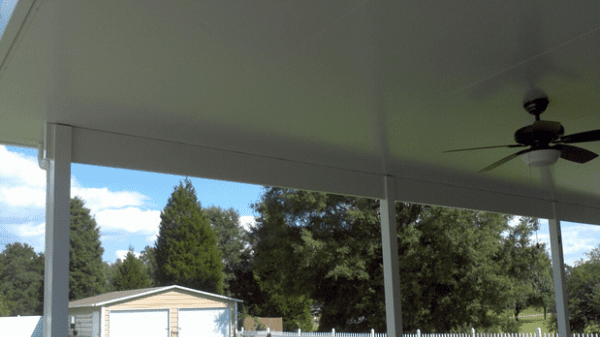
Patio Covers: Types, Uses, Benefits
Patio covers are a relatively cheap and less architecturally intrusive way to get more out of your outdoor living space. The essence of a patio cover is to put a roof, shade or awning over your head to keep off either the heat and the sun’s rays or rain and snow, depending on the season. However, how you go about covering your patio area, the style and materials you use and how much of a job it’s going to be can vary hugely depending on your own personal preference and existing patio design.
Here we’ll look at all the most common patio covers to find the best one for what you’re looking for, as well as their benefits and how much installing a patio cover is likely to set you back.
Types of Patio Covers
Patio covers are discerned by the roof style and material and the type of construction supporting it. The most popular types of patio covers are:
Pergolas:
The pergola is a classic as patio covers go and not only makes your patio more livable in different weather conditions but is also a striking architectural feature in its own right. A pergola is built as a self-standing structure, though it can also abut to the existing house walls. Its roof will be supported by posts, with beams holding the roof panels in the most common construction forms. However, pergolas allow for a wide variation in how they are set up. The posts and beams can be from different types of wood or metals, while the roof itself can be in any style or using whichever patio cover materials are most in line with the look you’re trying to achieve.
Awnings:
Another of the most popular type of patio covers, awnings consist of a sheet (or several) of material that is pulled out over the outside space you want to cover. The awning can be held in place either by posts as a fixed frame or with lateral arms coming out from the house, and you will also get to choose to install a fixed, all-weather awning or a retractable one that can be rolled back into a casing when not needed. One of the great benefits of awnings is that you can use pretty much any material to make it, meaning you can have cloth, aluminum slats, acrylic or even vinyl patio covers.
Solid Roof:
The benefits of having solid roofs as patio covers include the fact that they are very resistant to wear and tear and so don’t need much maintenance work, as well as creating a more permanent sense of comfort for the covered outside area, meaning it can store items such as furniture or barbecues without being fully exposed to the elements. Common roof panel arrangements include choosing from a flat plan or a W plan, with the flat panels creating a slick flat roof and the w plan having a wavy, corrugated look.
Latticed:
Latticed roofs as patio covers give the homeowner greater control over how much protection they need. The latticed roof can be fully covered with a canopy made from cloth or any other fabric. In contrast, modern latticed roofs have adjustable settings meaning you could, for example, allow a range of 10% sunlight to 90% sunlight, depending on your preference and the heat at the time.
Canopy:
Easy to install and probably the cheapest option out of all patio covers, canopies still offer great variety to the homeowner, allowing them to find a match for their personal style. Canopies can be hung from lateral arms, over latticed or open roofs or simply from hooks bolted to strong anchors. The canopy can come in any kind of fabric material, with larger or tighter apertures depending on the amount of sunlight you want to come through or even overlapping to create different visual effects.
Portable Patio Covers:
There are a number of options you can use if you want to cover specific parts of your outside space but not necessarily all of it. Large umbrellas or free-standing canopies can be rolled out of storage when the weather requires and put in place to cover your table for an outdoor meal or give the barbecue boss some protection from the sun’s rays.
The Benefits of a Patio Cover
-
Protection from Weather
The primary purpose of patio covers is to make sure you don’t get too much of whatever weather is being thrown at you, whether that be sun, rain or even snow. You want your outside space to be usable even when there are extremes that wouldn’t allow you to sit out and enjoy the space otherwise. Most people also invest quite a bit in terms of outside furnishings and decorations for their patio, so patio covers give you a way to protect them from the weather too.
-
Year-Round Use
It’s a shame if you can only sit out for a coffee or entertain guests at very specific times of the year or day. Patio covers expand the horizons of when you can use such a great space, meaning you get much more out of it and don’t have to constantly be checking the forecast to see if your plans are going to have to be taken inside or called off altogether.
-
Adding Architectural Style
The right patio cover not only makes your outside space more livable but it can also add something beautiful to your home too. With the wide range of styles and materials that can be used for posts, beams, roofs and canopies, you will definitely be able to find patio covers that suit your exact style and create a beautiful space for you to relax in.
Conclusion
Patio covers give great utility to your outside spaces, extending the times and months when you can use them as well as protecting patio furniture and other decorations from the worst of the elements. Choosing the best type of patio cover for you will depend on what you need it for and your own style preferences. However, pricing the installation of patio covers can also be difficult because there is so much variation in style and materials. Prices could run from $100 for a simple canopy hanging from wall bolts or an umbrella to $20,000 for a large, hardwood, solid roof pergola.
As with most things, if you’re looking at patio covers and wondering what will suit your needs best, it’s always good to chat with the experts. At Screenmobile, we’re always happy to help and can give you guidance and a free quotation on your patio cover options. You can go here to find your nearest Screenmobile operator.




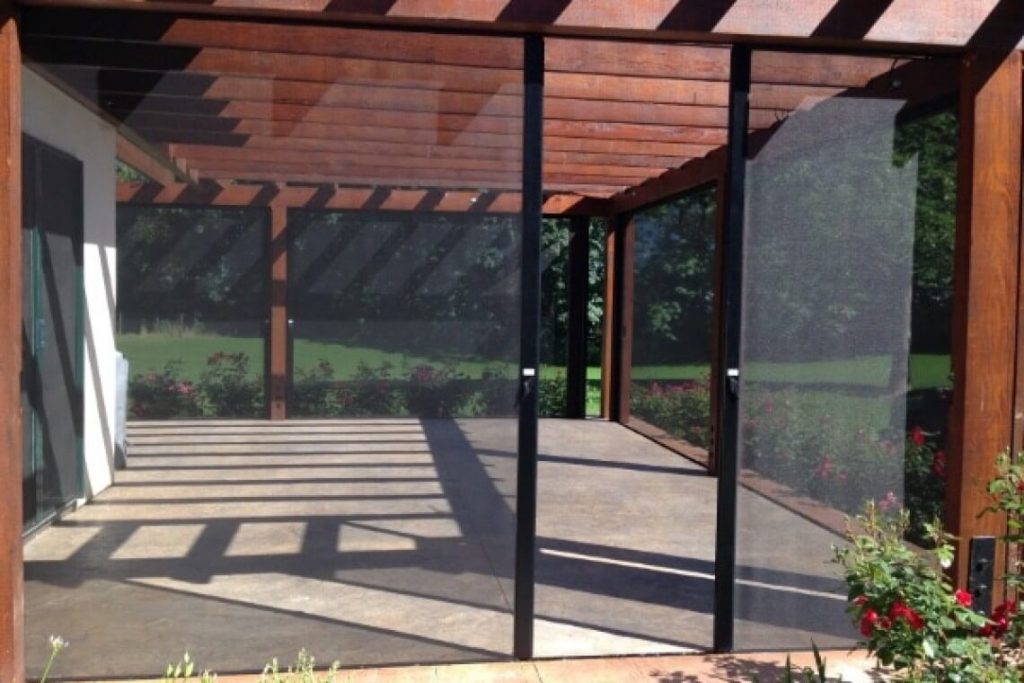
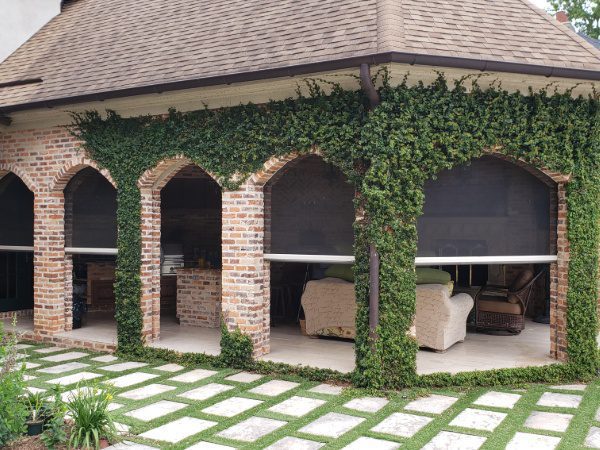
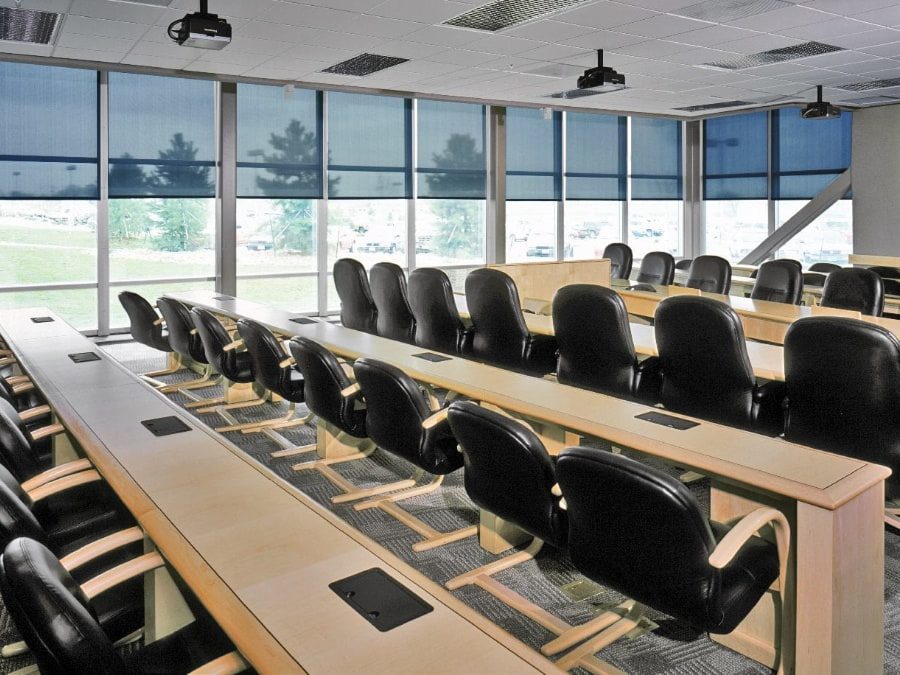

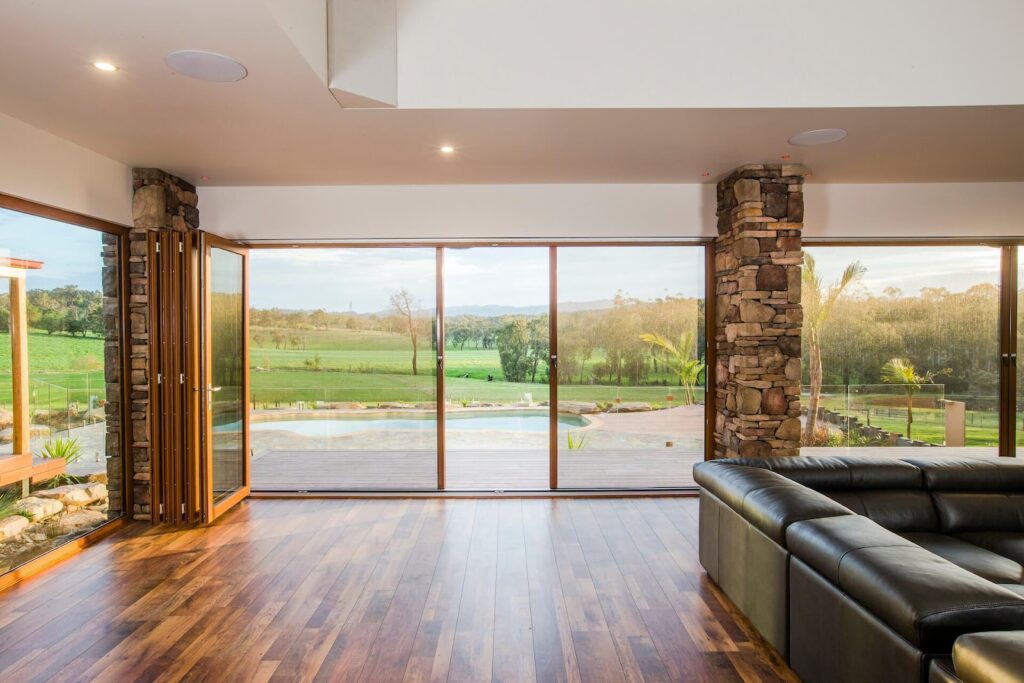

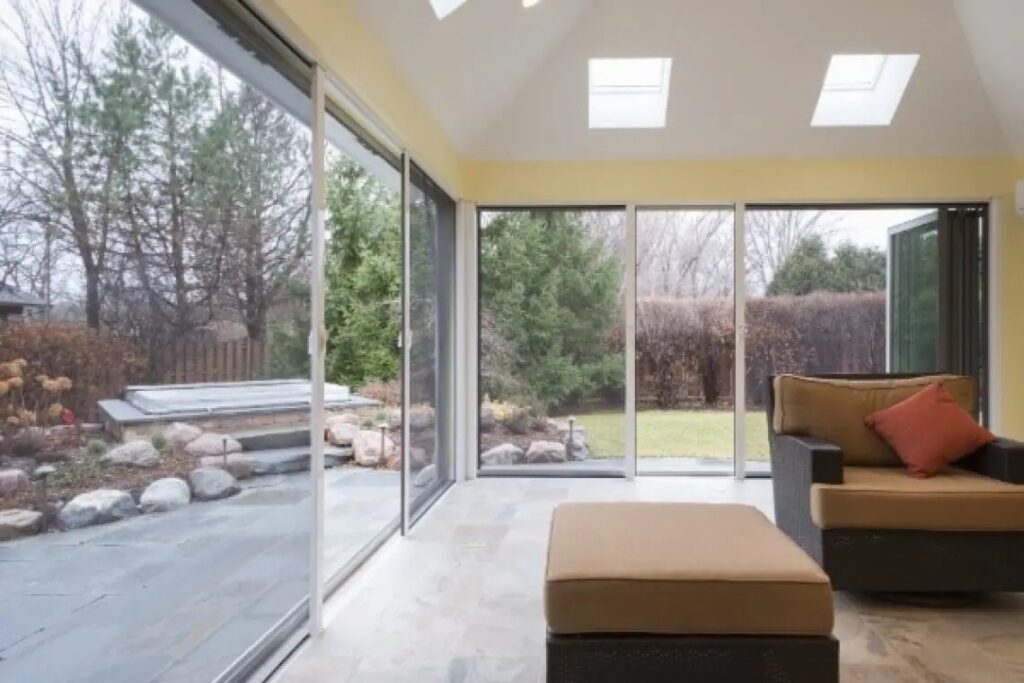

 Why is this significant?
Why is this significant?